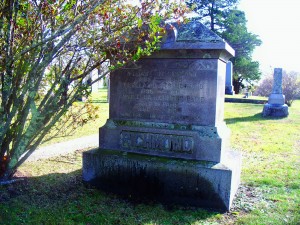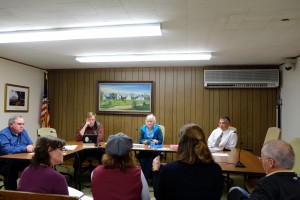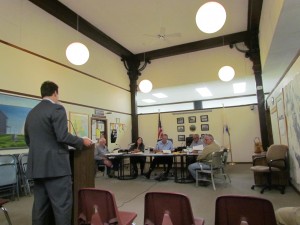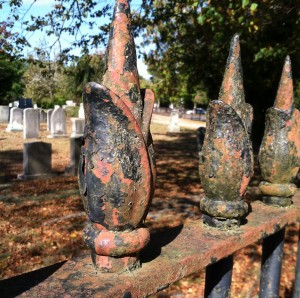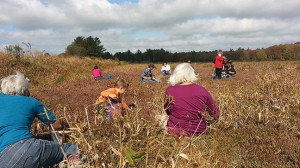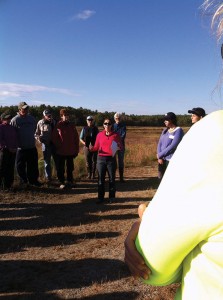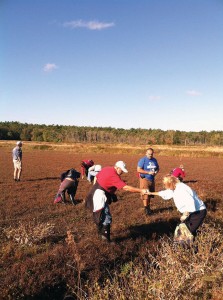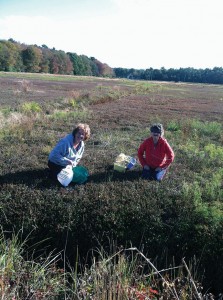Priscilla Richmond was widowed and living alone. Her home, which was located on present-day Foster Street, was described as being on “the fringe of the woods” in 1905. Priscilla called her house “The Shelter.” Her husband, William, a Civil War veteran, had died in 1898. Her only child, Annie Paine, had married in 1888 and lived in Mattapoisett.
Priscilla finally had Annie back home after she had unexpectedly left to go to Paris. It was around Memorial Day when she left but it wasn’t clear why. It wasn’t until late July Annie’s family found out she was attending a wedding.
Annie’s niece and close friend, Anna Barstow, asked her to be the matron of honor in the ceremony. Anna had lived in Mattapoisett for about 20 years. Her father had been in the whaling business and retired to take over a sizable estate in Mattapoisett. After finishing school, Anna went to work in a hotel on Nantasket beach and later went to Boston and then Philadelphia to become a housekeeper.
While in Philadelphia, she worked for a wealthy bachelor. When he passed away, he left her a large sum of money which she supposedly invested in a mine company which she more than tripled her money. She returned to Massachusetts and lived in “a fashionable quarter of the city” with her own housekeeper, Teresa McKenna. Anna held lavish parties at her home in Boston but still came down to Mattapoisett to visit her widowed mother who lived with the Shaw family on North Street.
It may have been one of these parties that she met Paul Butler. Butler was the son of former Governor and Civil War Major General Benjamin Butler, who famously declared escaped slaves as “contraband of war” and once hanged a man in New Orleans during the war for tearing down the U.S. flag.
Paul Butler was a wealthy businessman and a member of several prominent yacht clubs. Despite Anna’s declaration that she would never marry, the couple had other plans. Around Memorial Day, Paul, Anna, Anna’s friend Annie Paine and several other close friends left for France. Paul or Anna did not tell their families they were going to marry.
Anna’s uncle and Annie husband, Abraham Paine reacted to the news of the marriage; “Surprised? Yes I am … Last I heard from them they were in Paris… where Mrs. Paine was ill.”
In Paris, the wedding party ran into problems. When they arrived, they discovered that as foreigners, it would be impossible for them to marry according to French law. So they quickly changed plans and headed for Switzerland where they were married on July 21.
However, Annie became very ill and stayed behind in Paris. Annie had suffered a series of heart attacks and never recovered. She died on July 22. At home, Annie’s mother, Priscilla, was grief stricken. Annie was so far away and she wanted her back.
After the wedding, Anna Butler made arrangements to return Annie’s body was home. She prepared and placed in a coffin dressed in the clothing she was to wear at the wedding; a white silk dress and slippers.
Annie’s body arrived in New York on August 7, and 10 days later, she was delivered to the Shelter, where her grieving mother awaited her. Her mother did not want to let go of her dear Annie so she kept her body, still dressed in her wedding party clothing lying in the coffin, in a parlor just off of the bedroom.
At one time, it was common to have the deceased laid out in the home in the days before a funeral with funeral services taking place in the home. It is most likely that many homes in the tri town, if they are old enough, housed a deceased loved one until the body could be buried.
However, Priscilla did not want to bury her daughter anytime soon. She spoke of having Annie there for her long, final visit. The room was decorated with flowers and she kept chairs near the coffin so she could sit with Annie and visitors that came to pay their respects. And many people came over the weeks to visit.
Though it was late August, the French undertaker that had prepared Annie’s body for her trip home had taken great care to preserve her. She was embalmed and her body placed in a metallic casket, which was hermetically sealed. In the area of the casket that covered the face of Annie was a sheet of glass so one could see her face. The metallic casket was then placed in a polished oak coffin which had a unique feature; a hinged door over the glass of the casket. Priscilla often kept this door open so she could gaze at the face of her dead daughter.
Going in to September people began to wonder when or even if Priscilla would bury her daughter. It was thought she was waiting for Anna Butler to return home from Europe so she could attend her burial. Anna was just as distraught over the loss. She wrote home to Priscilla, “What shall I do, Mother Priscilla with my beautiful sister gone?”
Local folklore tells that Priscilla kept the body in the house for six months before being ordered by the Board of Health to bury her daughter. But in late August the Board of Health discussed the matter and since they had received no complaints and the body was well sealed they let the mother continue to grieve.
According to Annie’s death record she wasn’t buried six months later. In fact, the date of burial is noted as September 27, 1905; about five and half weeks after her body returned home and two months after she died. Weather she was buried by a Board of Health order or unable to wait any longer for the return of Anna Butler, Priscilla finally had to let go and say goodbye forever at Cushing Cemetery.
The tragedy did not end here. Annie’s husband, Abraham, had become withdrawn. He stayed in his “Oakland Heights” home in Mattapoisett and became known as a hermit. In July 1906, he traveled to New Bedford where he made a visit to James Ebenezer Norton Shaw, a young Mattapoisett attorney to draw up his will. He left Mr. Shaw’s office and disappeared. He was last seen asking for car fare at a saloon located at the New Bedford end of the Fairhaven Bridge.
Early in 1907, a gruesome discovery was made. The skeleton of Abraham was found near a road in Mattapoisett. He had no clothing on except for two “flimsy” shirts which were identified by friends as belonging to Abraham. It was believed that he had wandered through the woods half clothed, perhaps intoxicated. At some point he became exhausted, passed out and later died.
In the early 2000s the home of Priscilla Richmond, once known as the Shelter, was falling apart. The home was torn down along with all of the grief it witnessed and a new house was built in its place.
A photograph of Annie Paine’s coffin in her mother’s house can be viewed at the Whaling Museum’s website at: www.whalingmuseum.org/explore/collections/database/search-photographs and keyword search Priscilla Richmond.
By Kyle DeCicco-Carey
